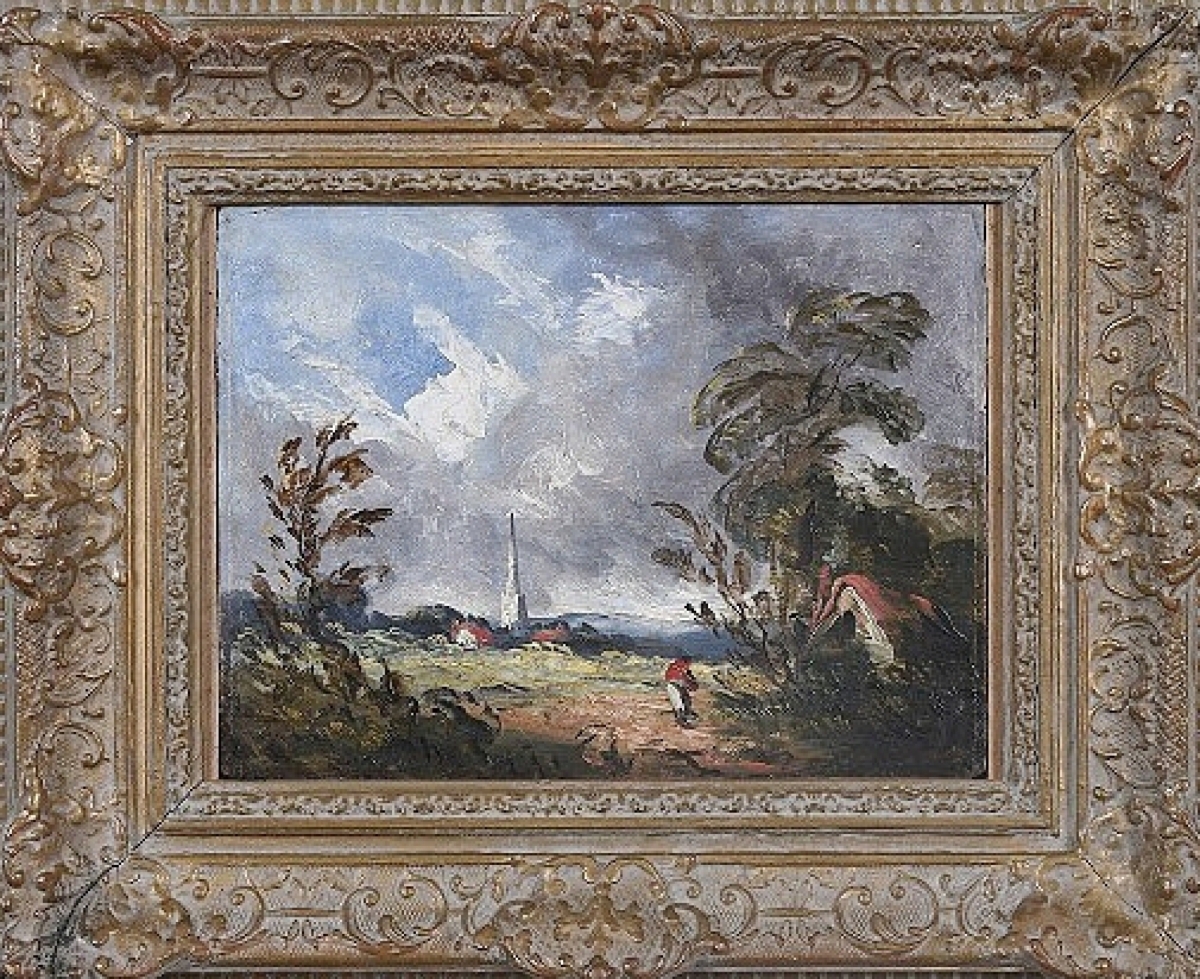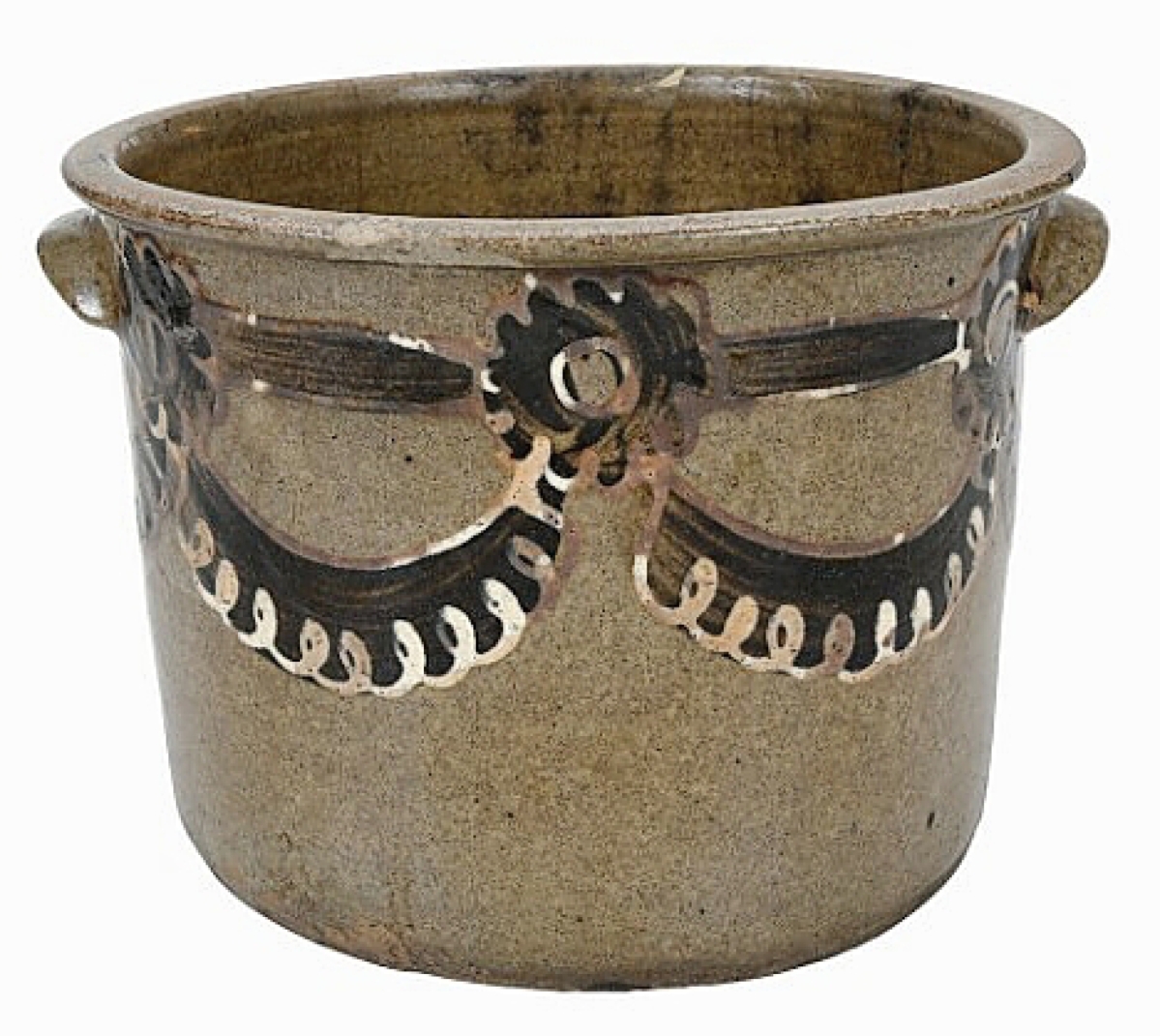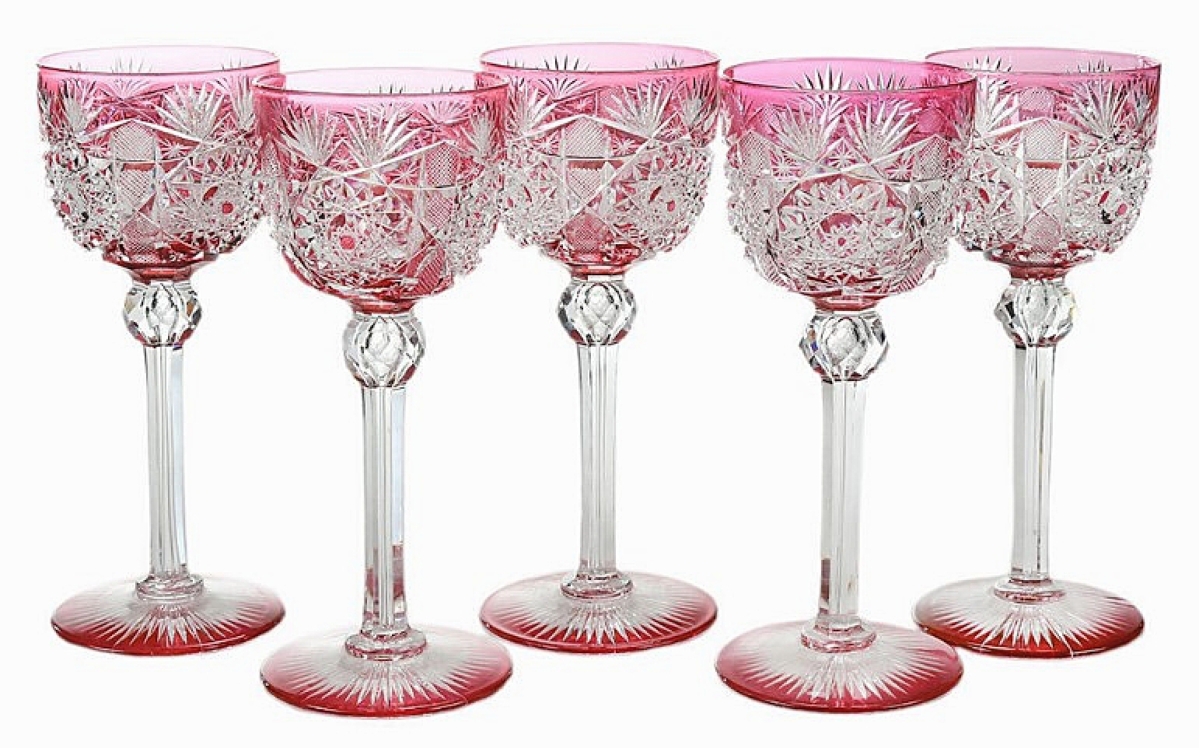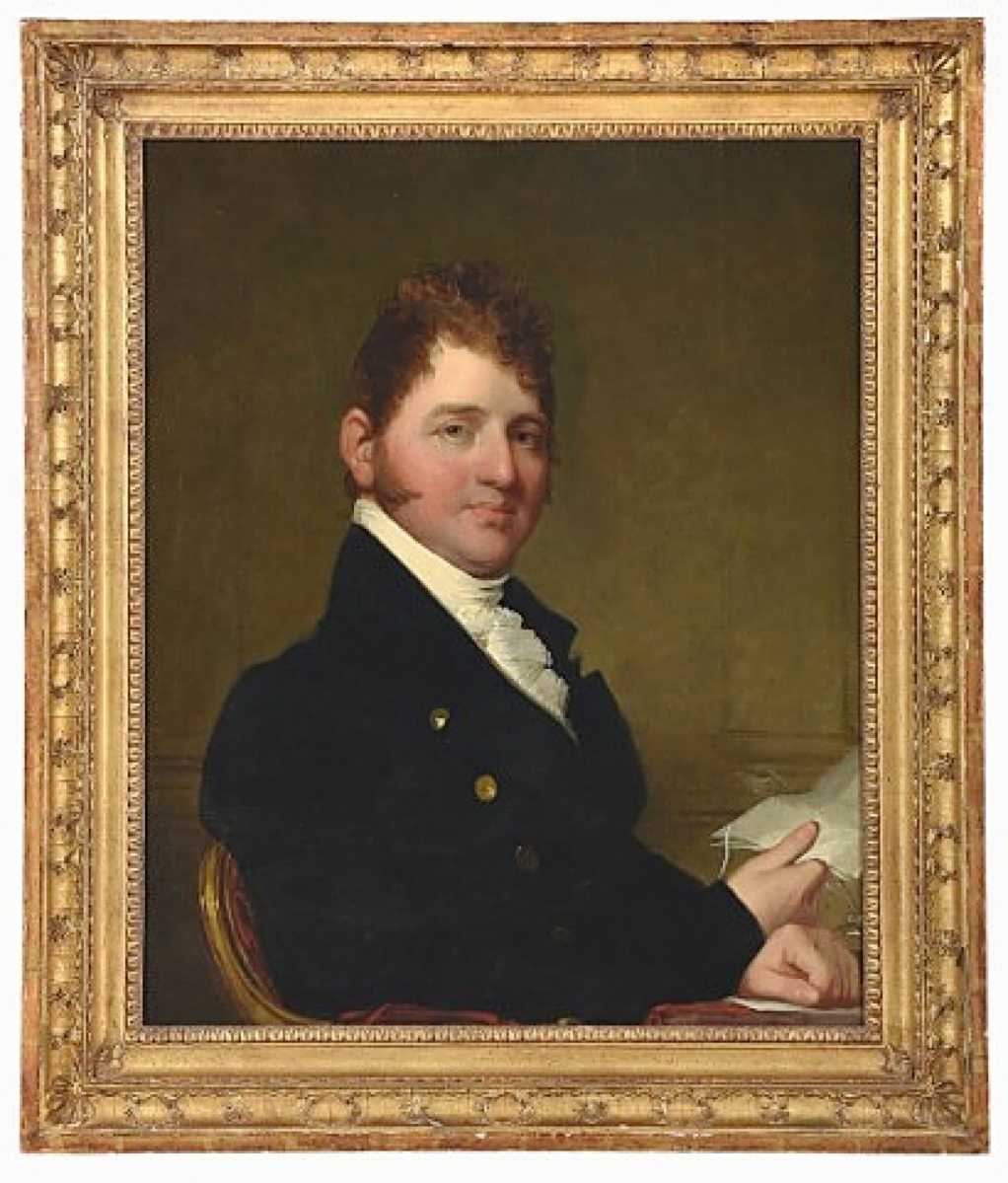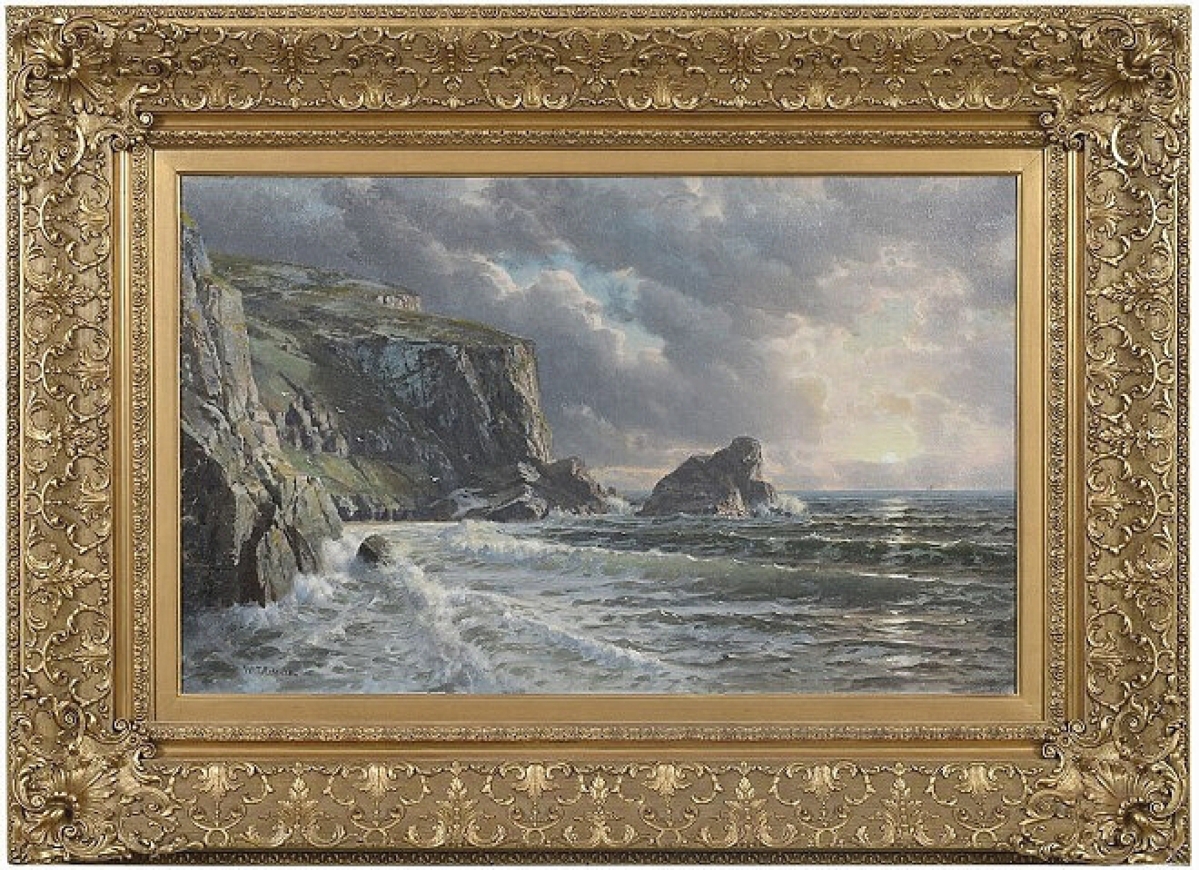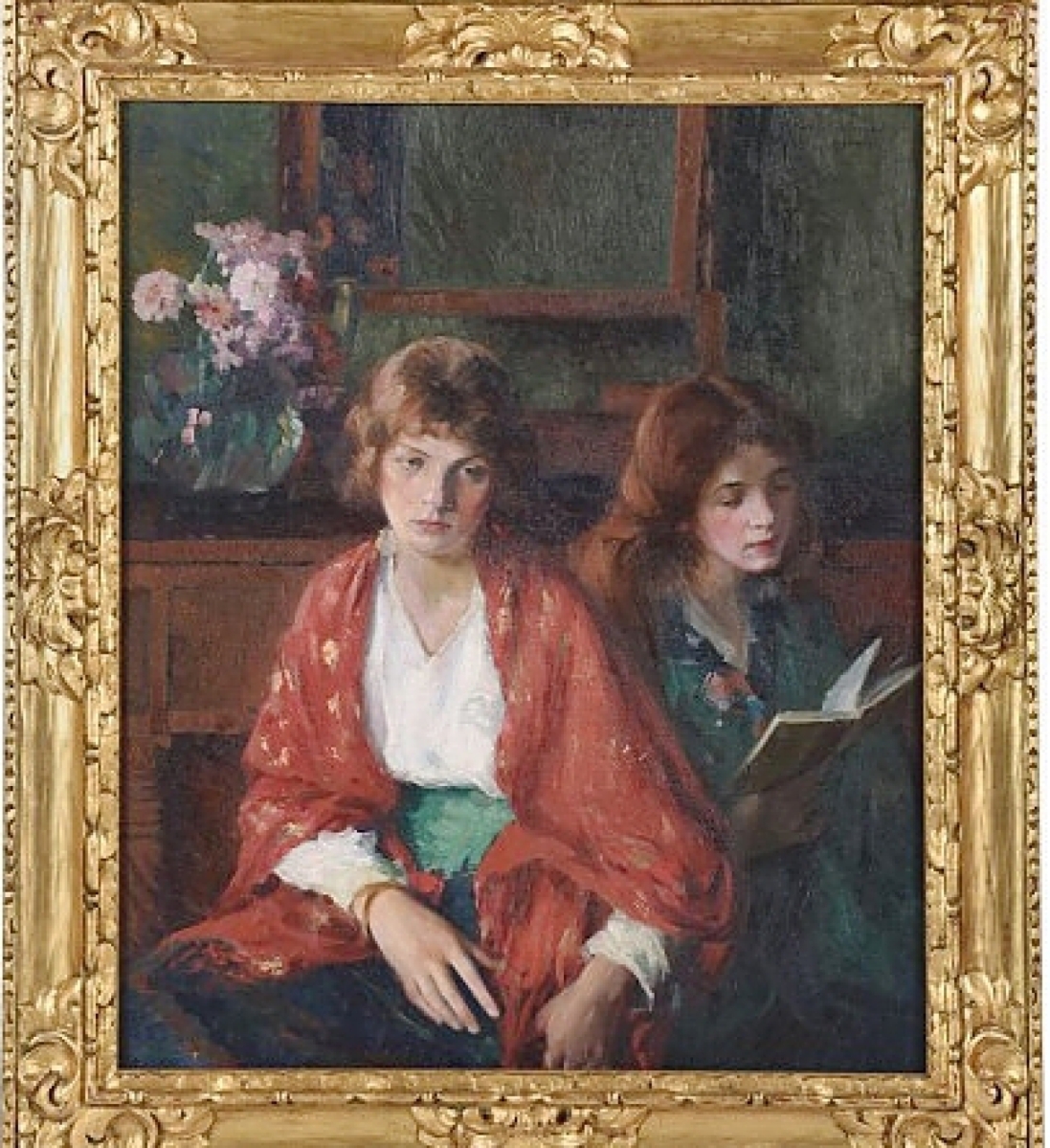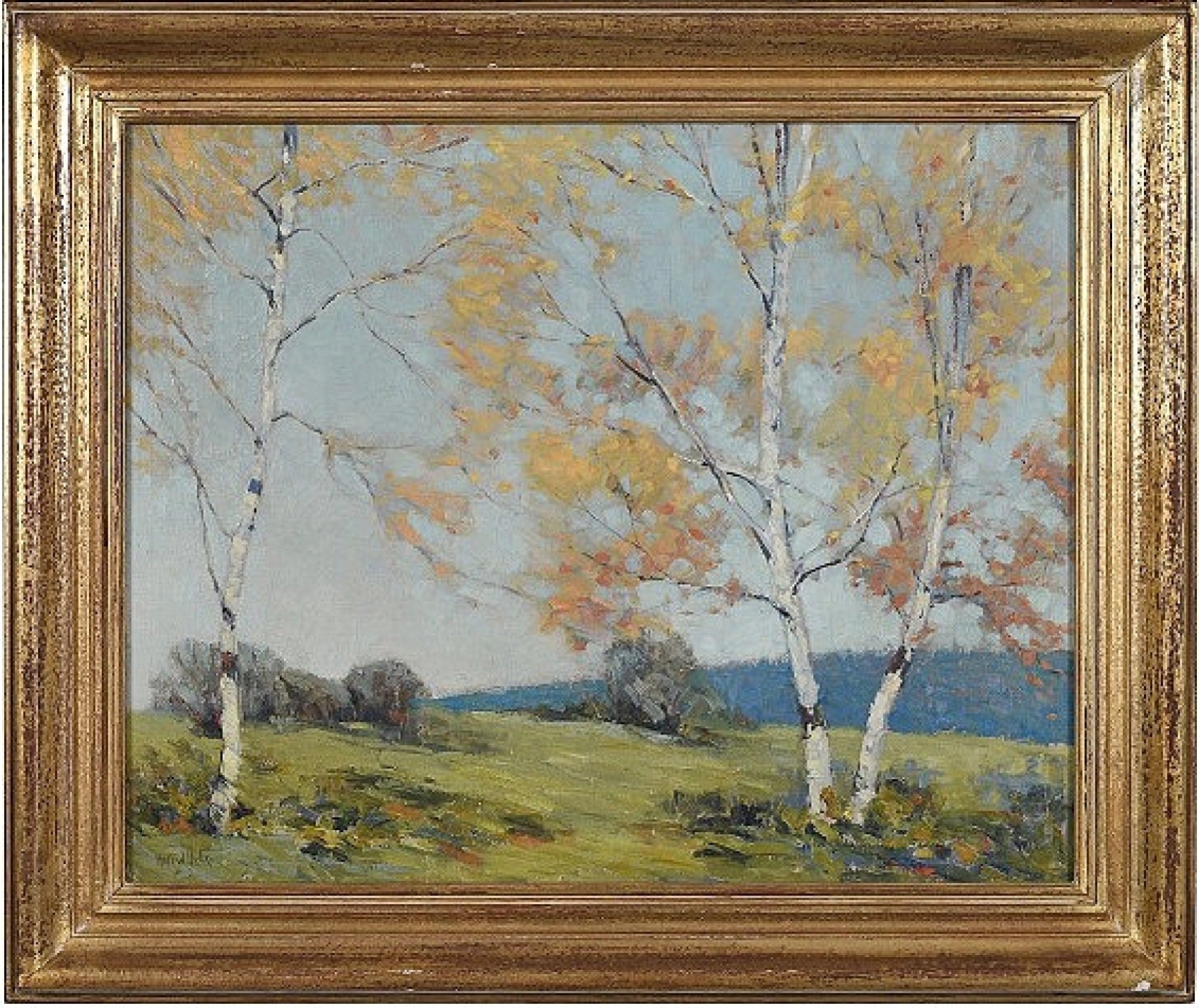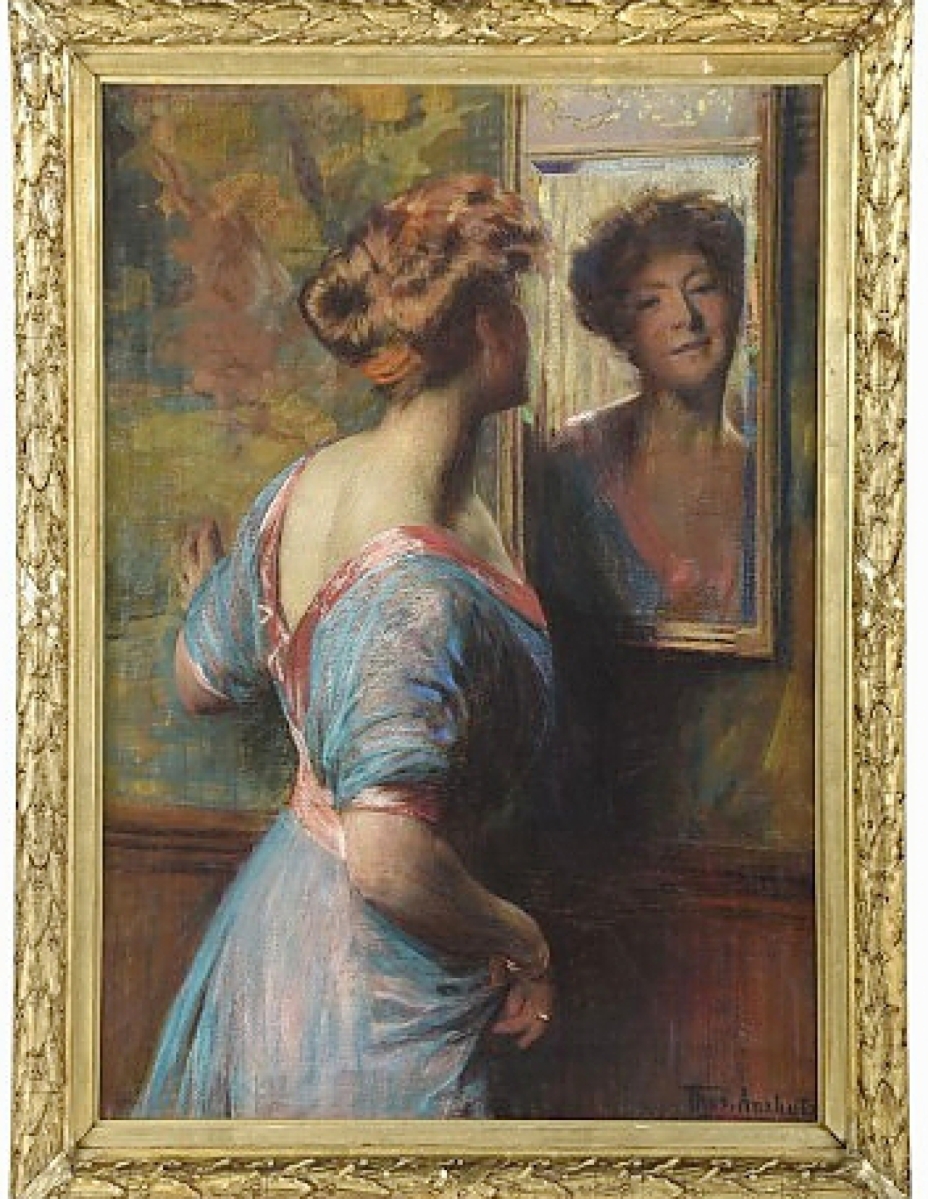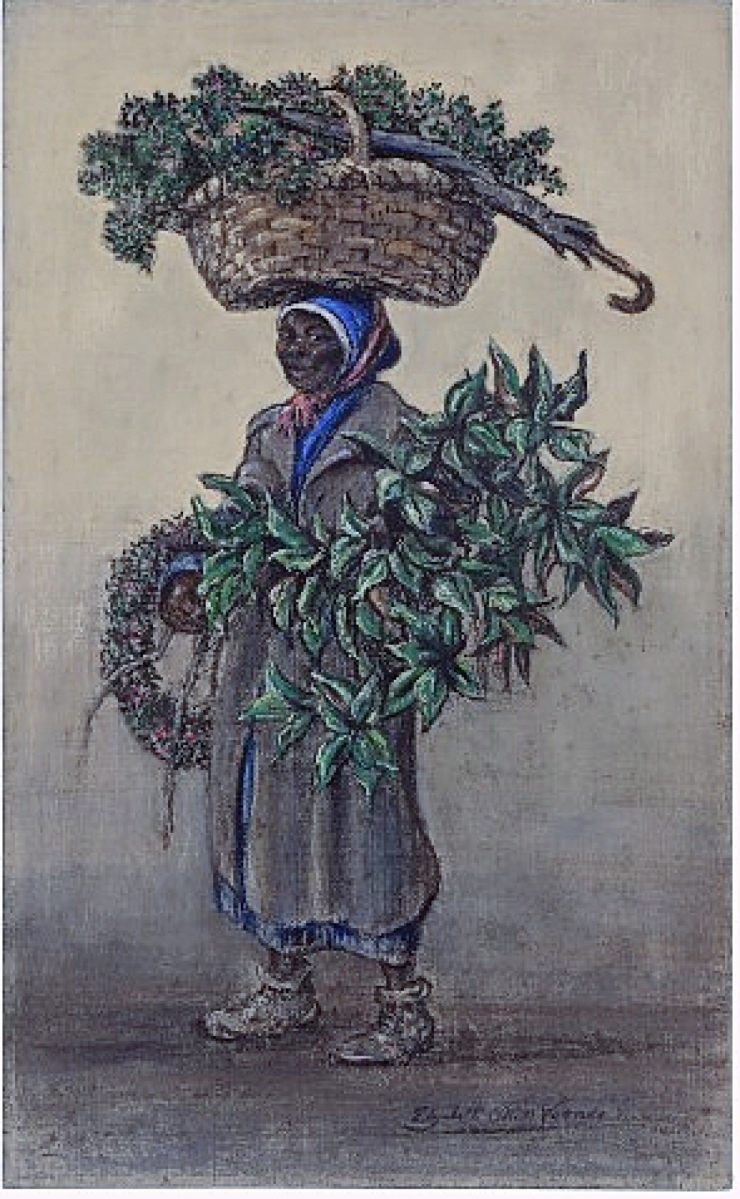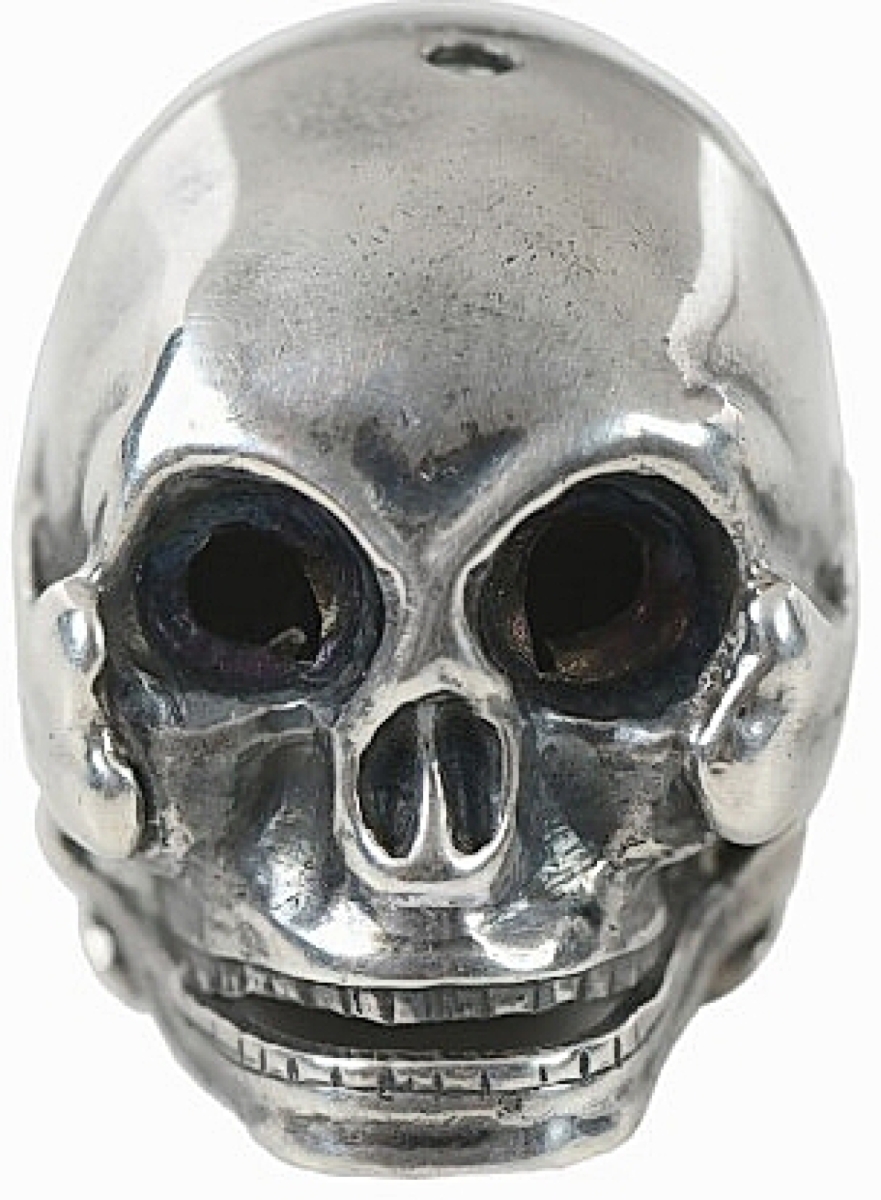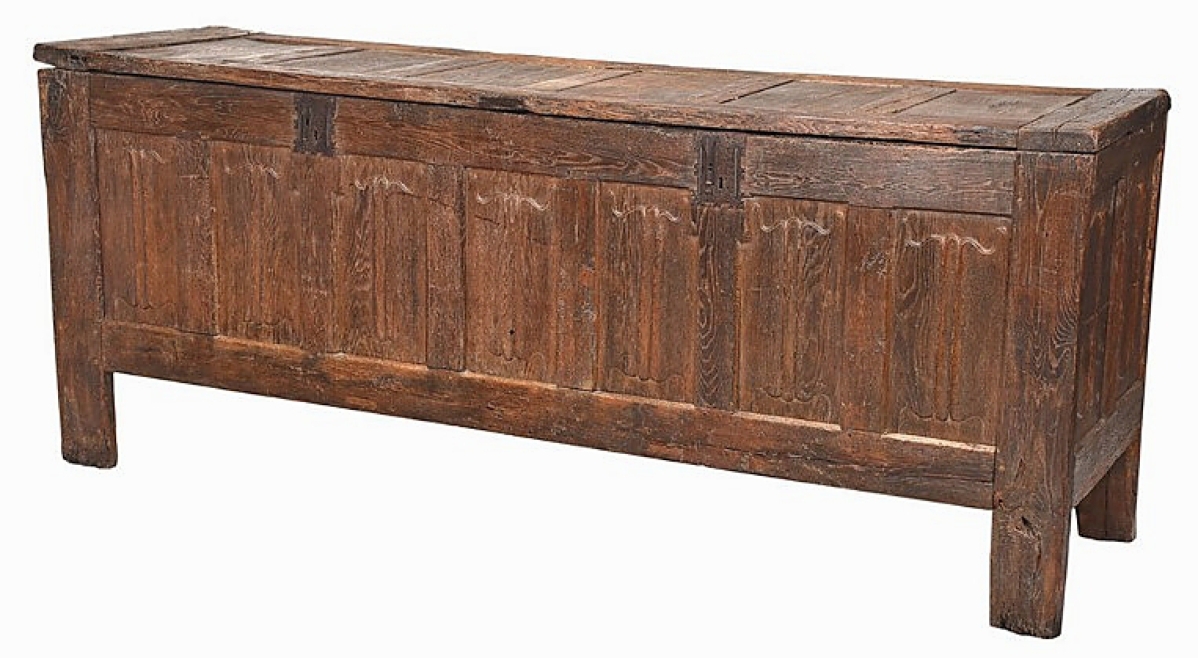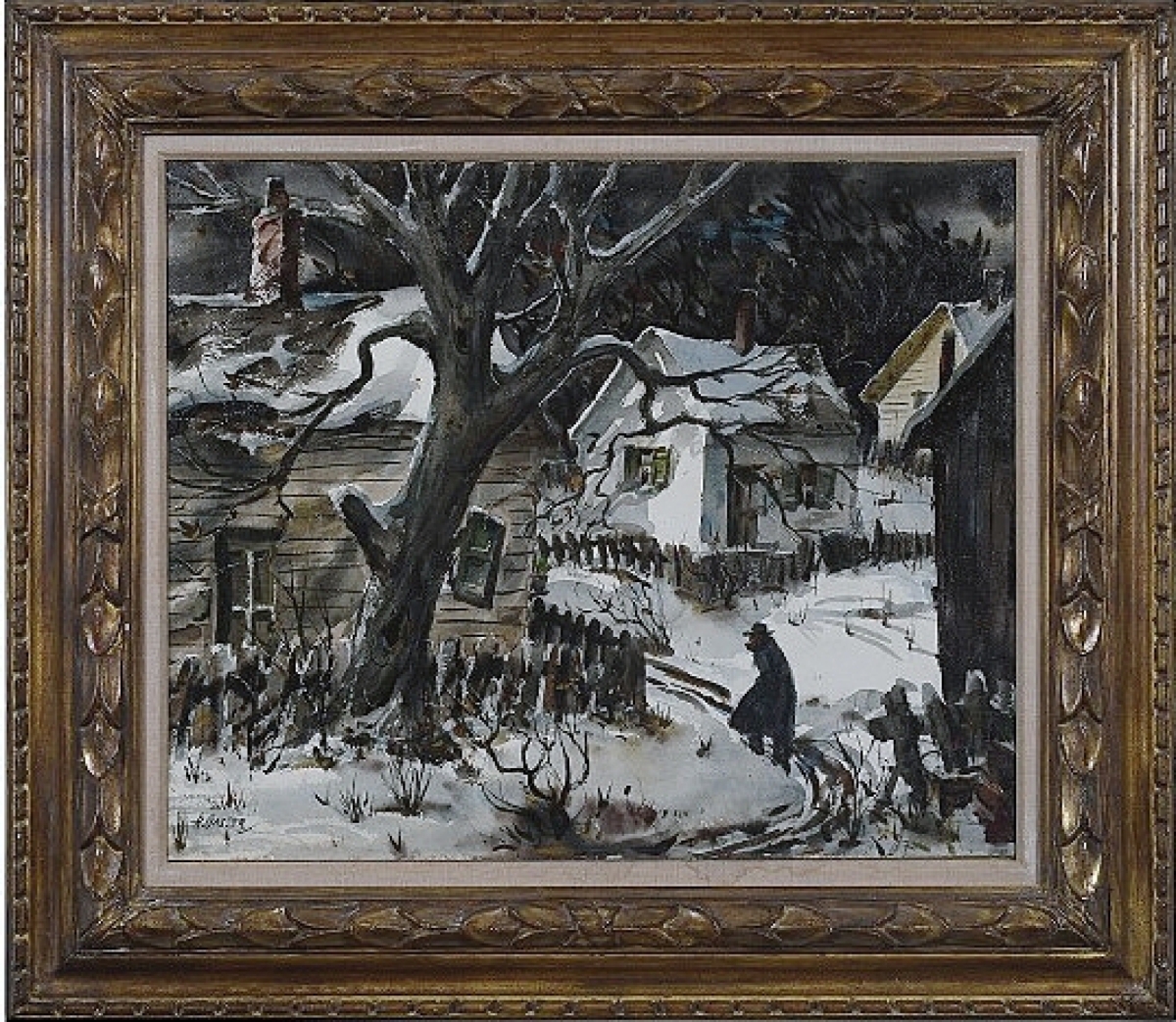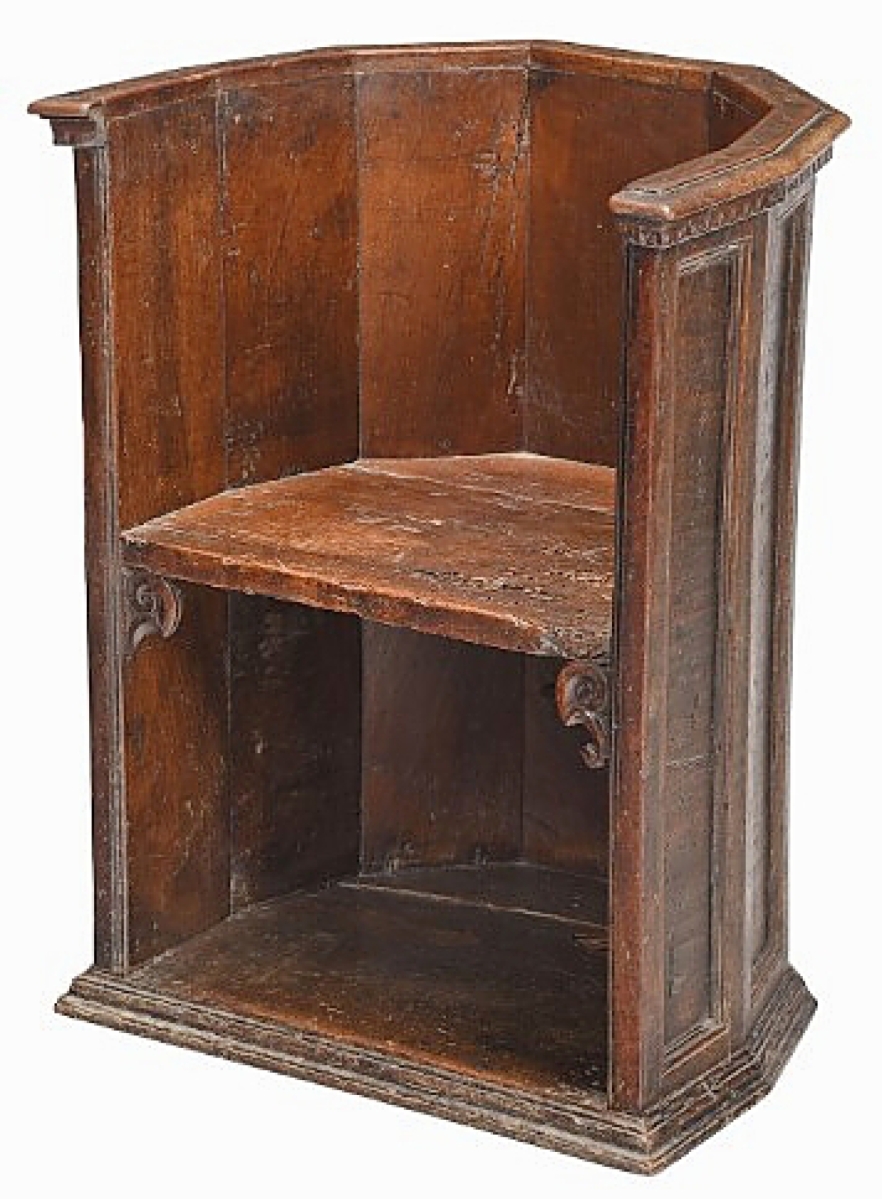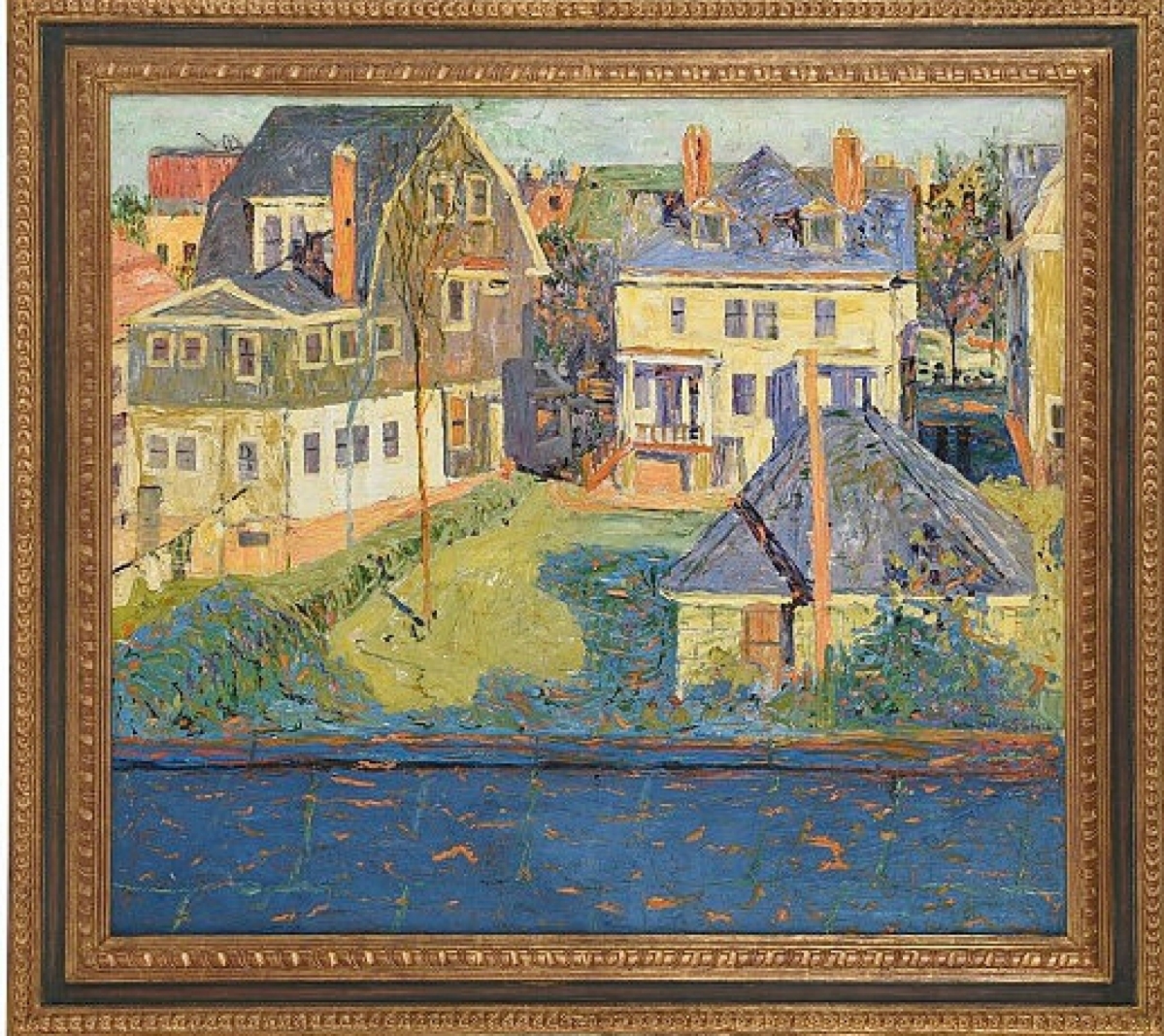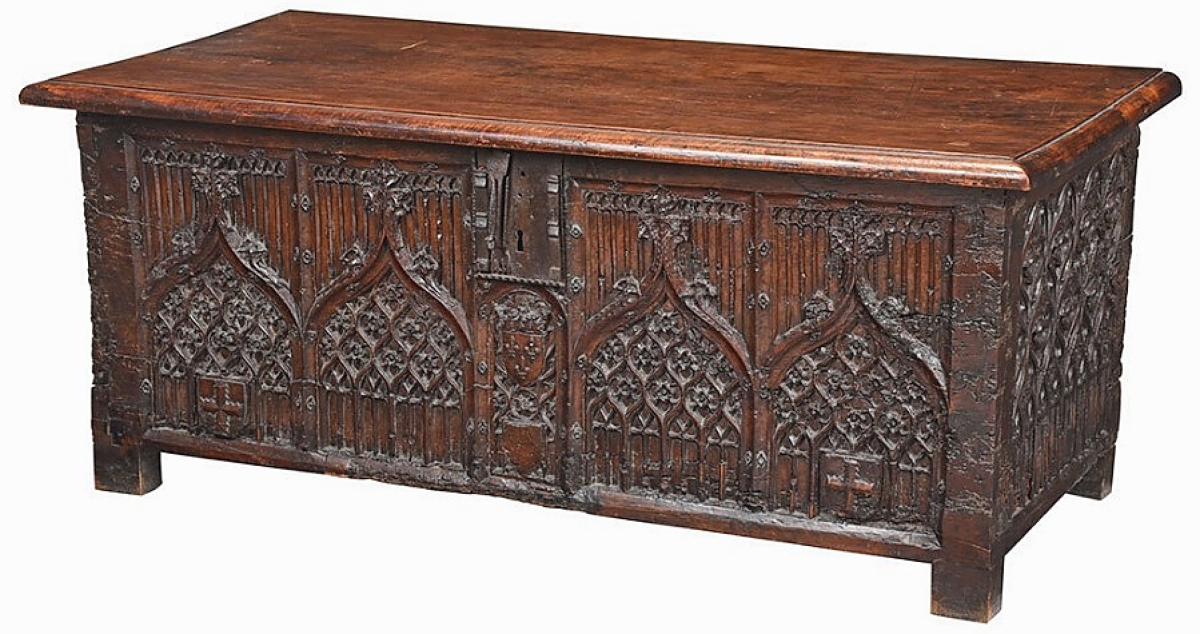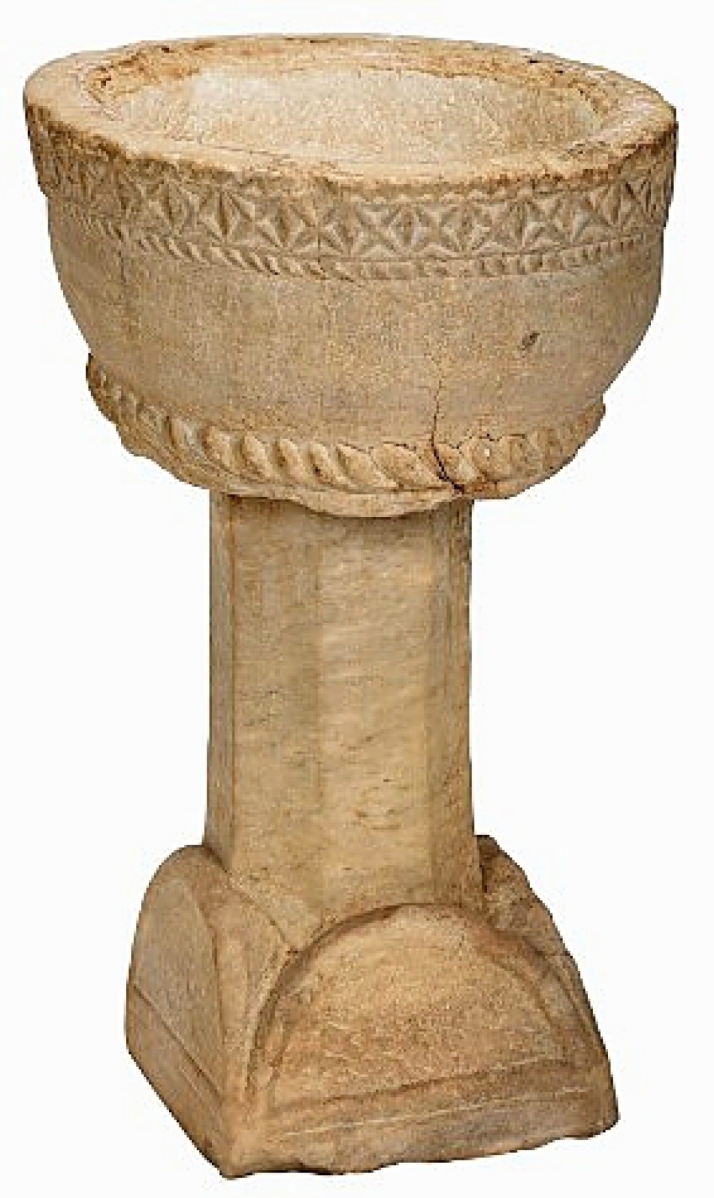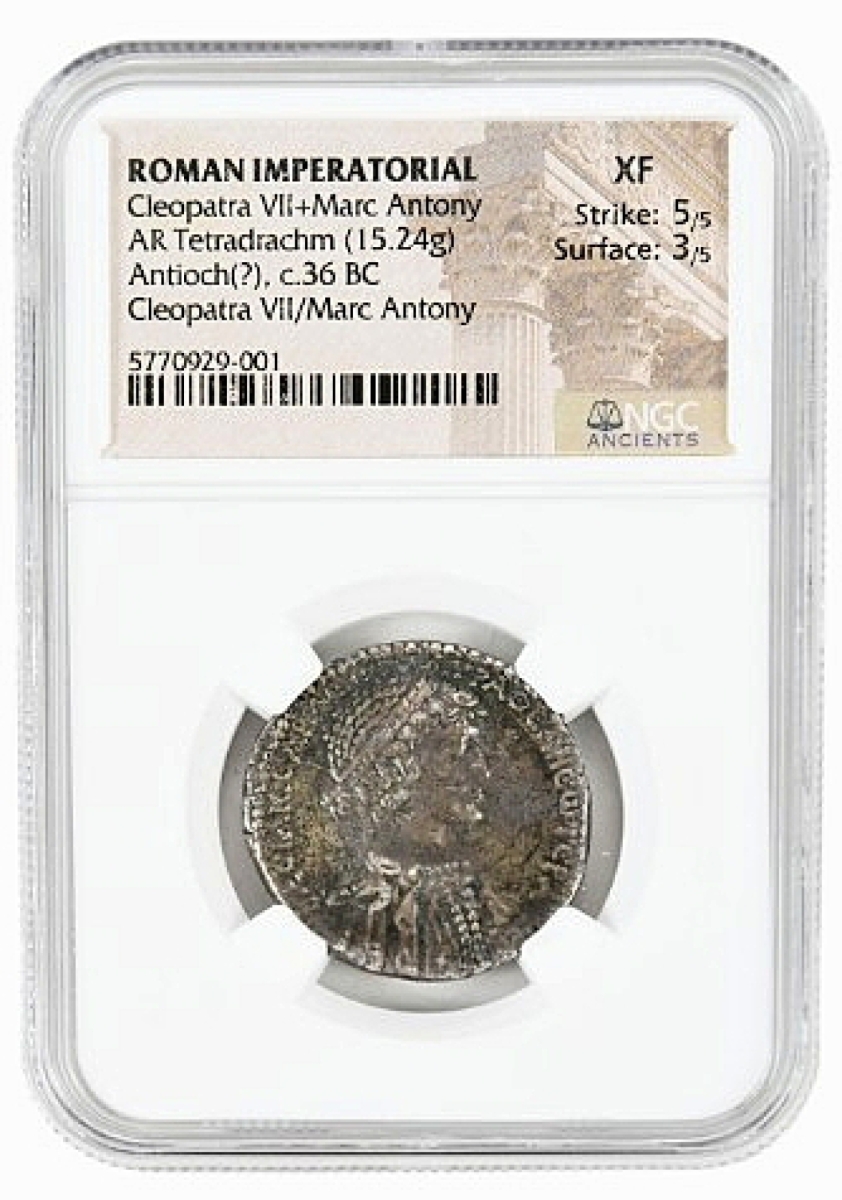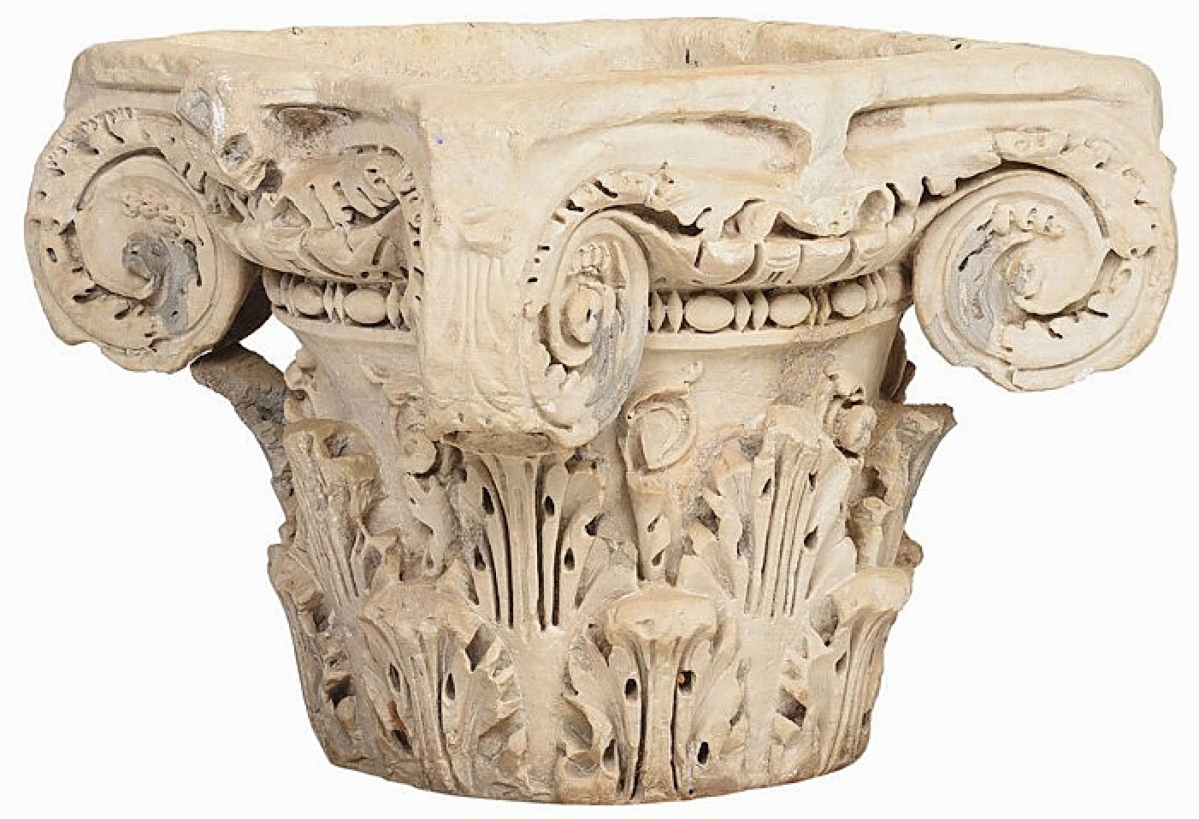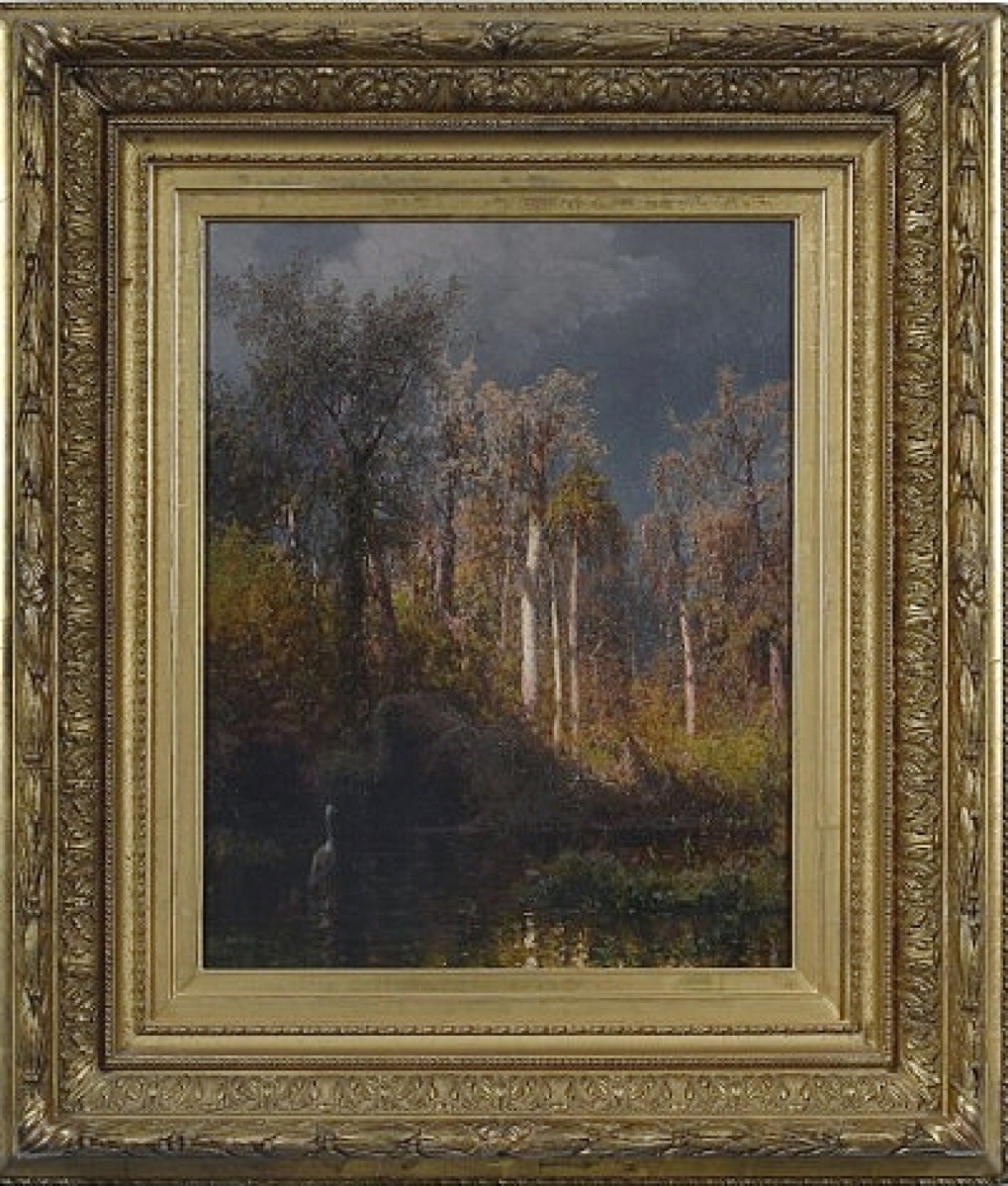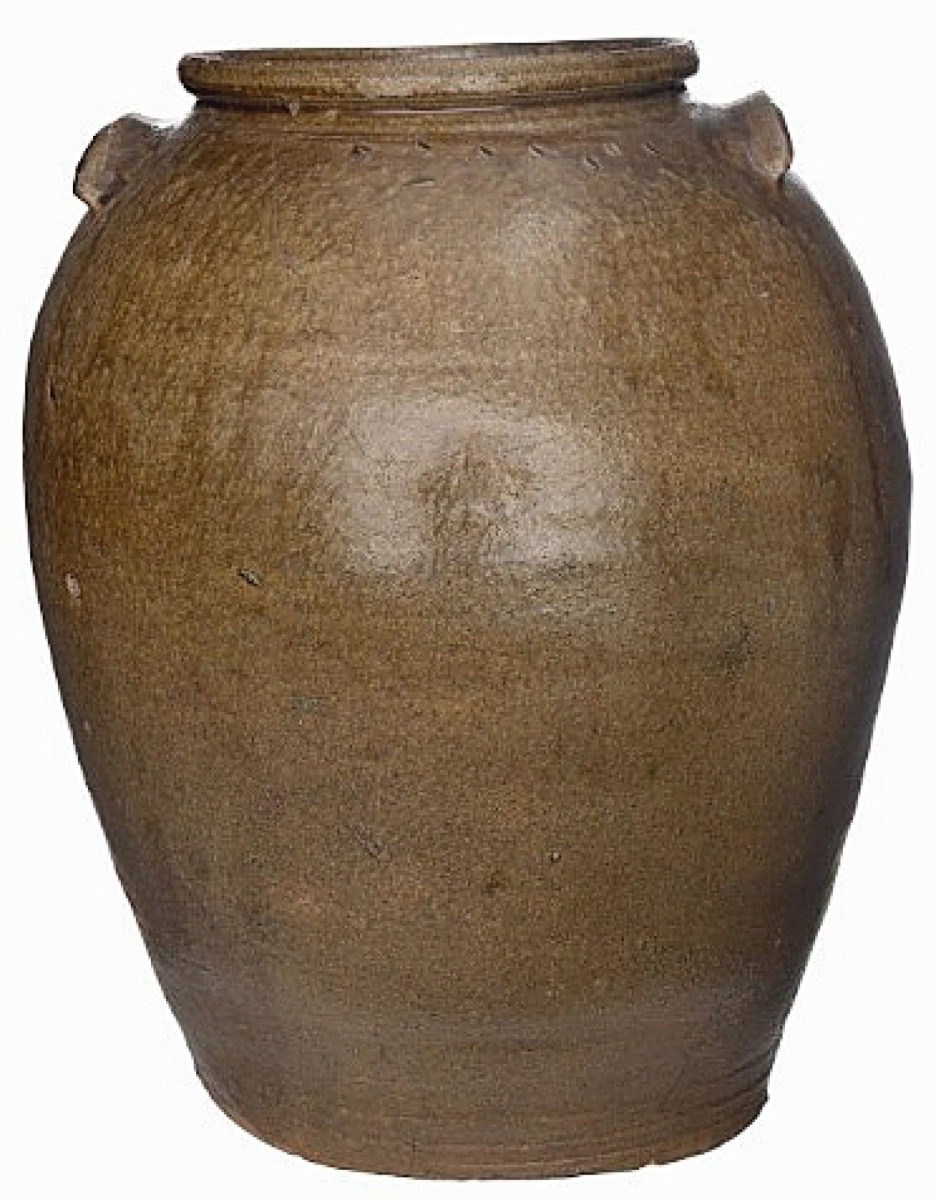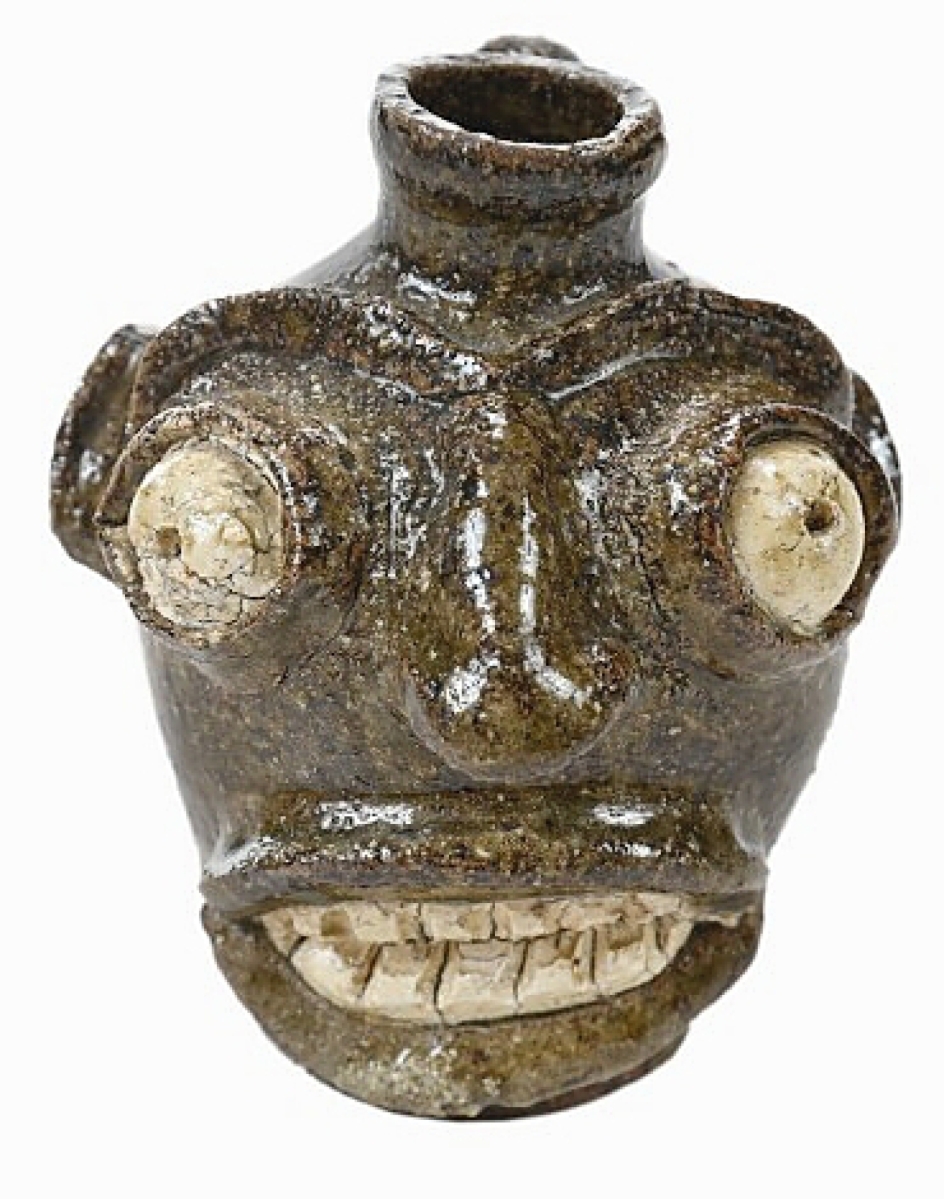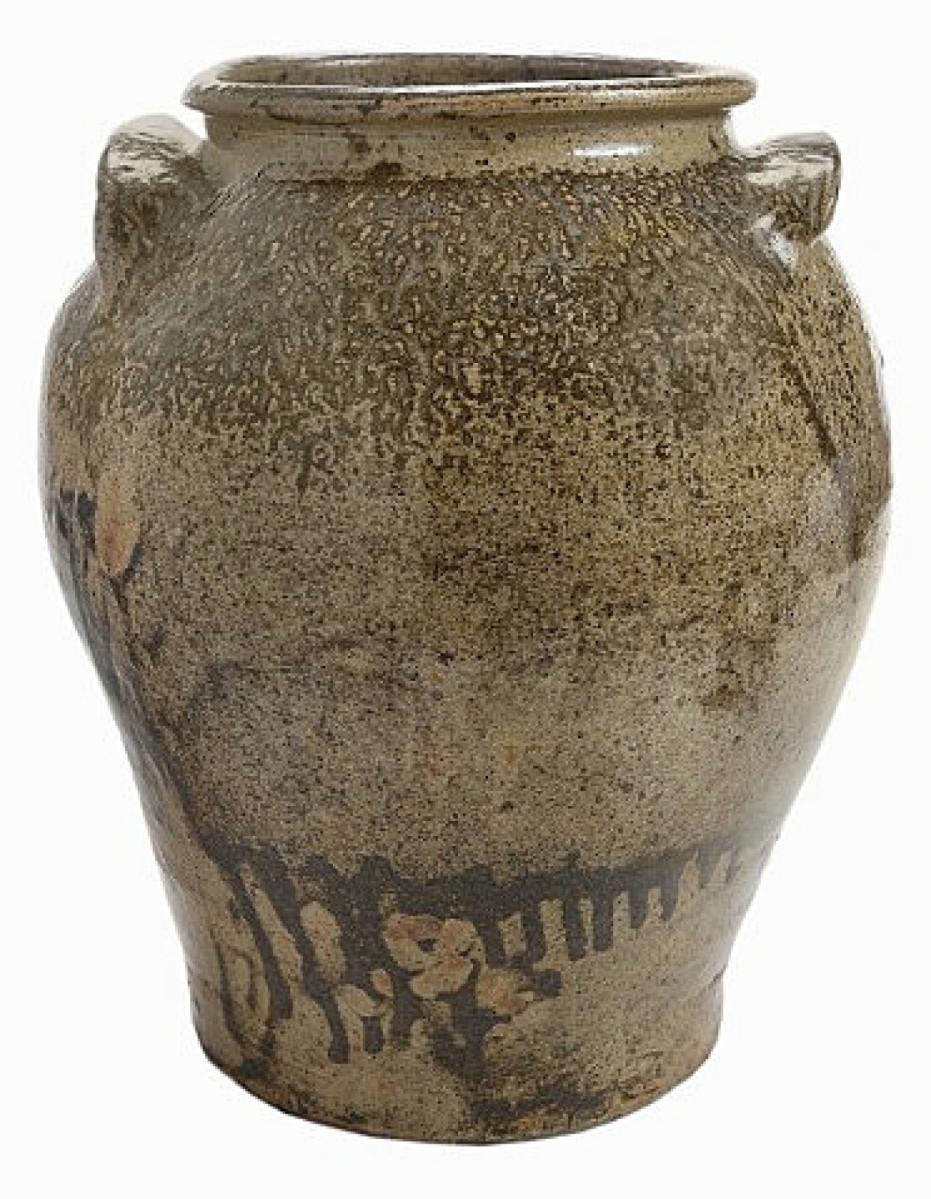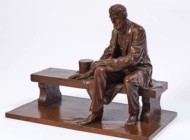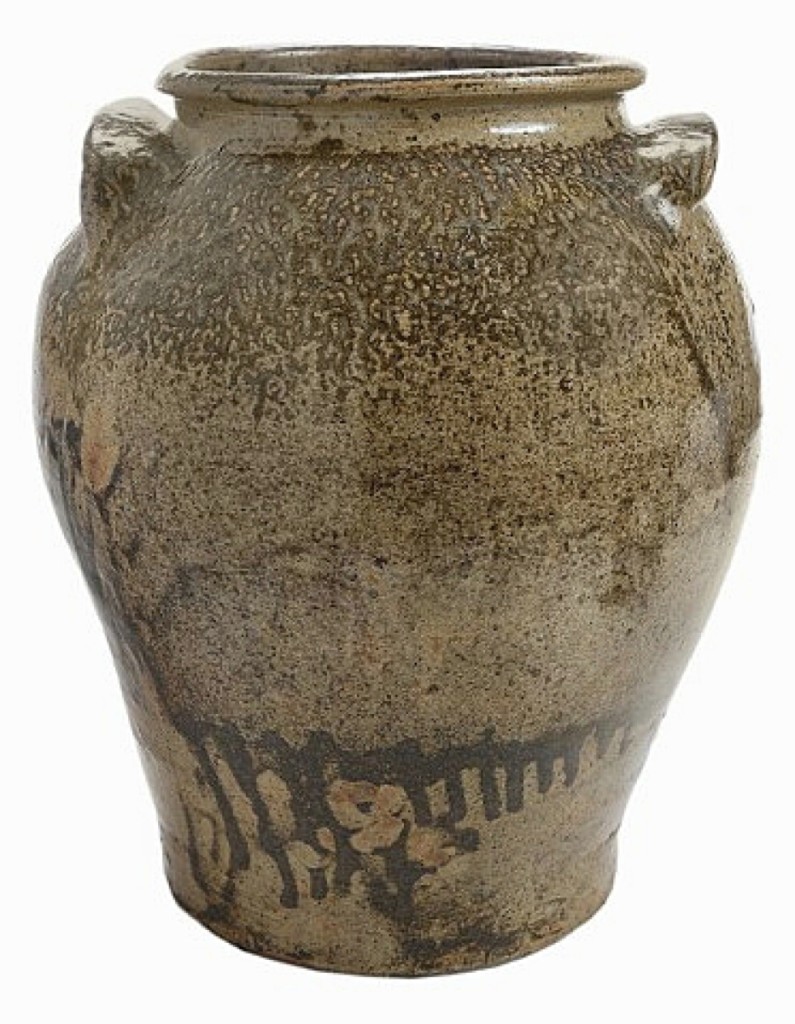
This inscription jar predates the period when Edgefield, S.C., potter Dave Drake was signing his works, but there was no question that it was by his hand. It now holds the auction record for any work made by him. Several aspects drove the price but, in the end, the inscription and early date of 12 April 1836 were the most critical factors. An American institution on the West Coast, bidding on the phone, acquired it for $369,000 and underbid by another institution. Wingard collection. ($40/60,000).
Review by Madelia Hickman Ring, Catalog Photos Courtesy Brunk Auctions
ASHEVILLE, N.C. – By the time the gavel fell on the last of more than 450 lots offered by Brunk Auctions November 20-21, a combined total of $1,852,020 had been achieved with a sell-through rate of 95 percent. Crossing the block on the first day was nearly 290 lots from the Lake Toxaway, N.C., estate of Paul W. Doll Jr, that was comprised of a broad variety of American, European and Asian fine and decorative art, modern art and jewelry. The living estate collection of Joseph T. and Gaile E. Wingard from Jacksonville, Fla., which crossed the block on the second day of sales, was of markedly different material, with Southern pottery and American paintings generating the auction’s top lots.
We caught up with Andrew Brunk after the second sale wrapped up and he was ebullient. “They were really great sales, both sold over their high estimates. We had competition on almost everything, including overseas bidding and new clients. The two collections were very different – though both had American paintings – and co-mingled in the room, it made a great mix. They appealed to a very broad range of national and international bidders. The price we got for the inscription jar attributed to Dave Drake resets the record for any of his pieces, signed or not. An American institution on the West Coast bought it, with other institutions and collectors pursuing it; it was very exciting to see the sort of reach and demand of that market.”
The inscription jar Brunk was referencing came from the Wingard collection and was the undisputed star of the weekend. Made at the Pottersville Stoneware Manufactory in Edgefield District, S.C., in 1836, the 14¾-inch-tall piece featured a tan and dark brown alkaline glaze in two different directions and two inscriptions: “12 April 1836” inscribed just below rim, and “Catination” across the shoulder.
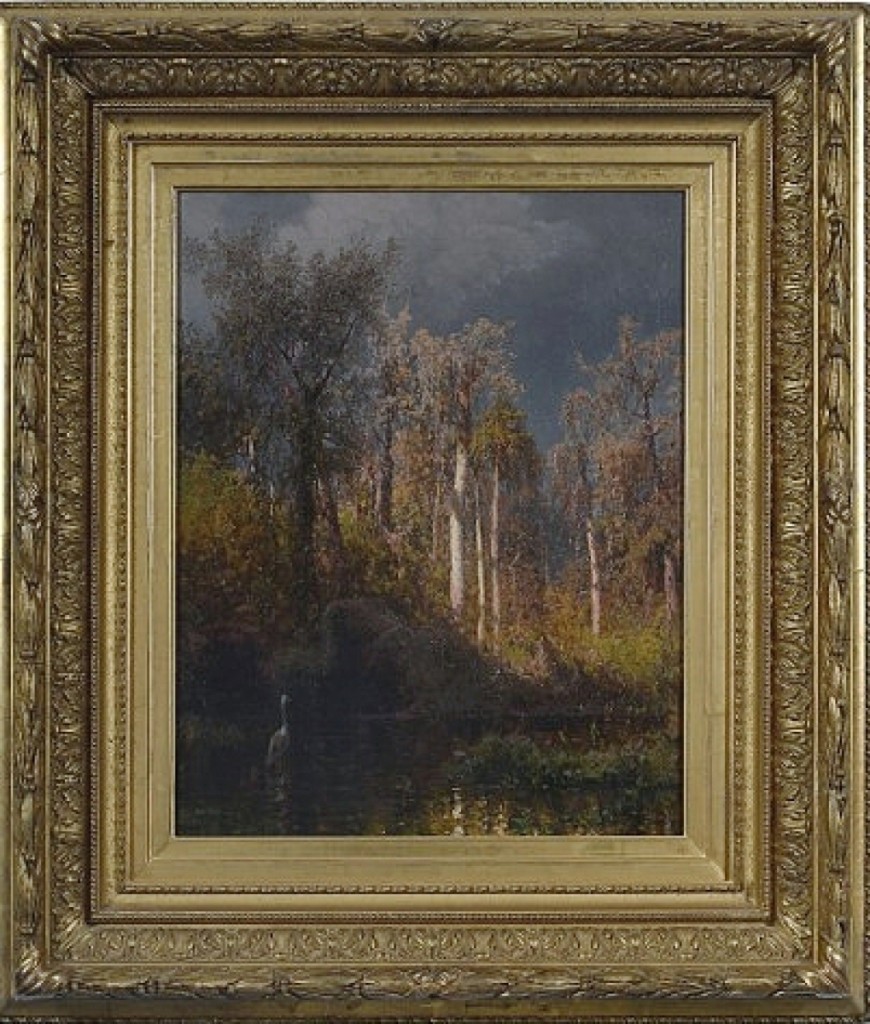
Brunk characterized the price of $107,100 realized for “Gainsville Marsh, Florida” by Hermann Ottomar Herzog (American, 1831-1932) to be “a very big number.” The work measured 30½ by 26½ inches. Wingard collection. ($20/30,000).
Prices for masterful pieces by Dave Drake, the enslaved African American potter working in various stoneware potteries in Edgefield, S.C., from the 1830s through the 1860s, have been bringing increasingly higher prices, and this is the third time in less than a year that a new high-water mark has been set. The price realized by Brunk – $369,000 – smashes the record set May 1, 2020, when an 8-gallon alkaline-glazed stoneware jar made at Lew Miles’ Stoney Bluff Manufactory in 1857 and incised “Lm / Decr 17. 1857 / Dave,” brought $216,000 at Crocker Farm auction in Sparks, Md. That price was itself an improvement over the previous record of $184,500 that Brunk had achieved on February 8, 2020, also for a monumental alkaline glazed jar from the Lewis Miles Stoney Bluff Manufactory, this one inscribed “Lm September 7 1857” and “Dave.”
To put the significance of the new record into context, a little backstory on the works of Dave seemed to be in order so we turned to Brunk Auctions’ specialist in Southern pottery, Corey Jones, who said he relies heavily on existing research on Dave’s pottery. The most up-to-date scholarship is that of Arthur F. Goldberg and James P. Witkowski, whose article “Beneath His Magic Touch: The Dated Vessels of the African American Slave Potter Dave,” was published in the 2006 issue of the Chipstone Foundation’s journal, Ceramics in America.
Made at a time when literacy among enslaved people was not permitted, Dave’s inscribed pieces are an improbable and astonishing record of Southern pottery manufacture. According to Goldberg and Witkowski’s article, 1829 was the earliest year when Dave began to inscribe the date of manufacture on his works, and his name does not appear on pieces prior to 1840. Only three works with words or inscriptions were made prior to the jar Brunk just sold and only seven pieces with earlier dates are known. The word “concatination” (sic) appears on a jar dated June 12, 1834; it – and “catination” (sic) as is inscribed on the new record holder – refer to bondage and likely references Dave’s condition as an enslaved man and also demonstrates his literacy.

“For centuries, these were presented to sultans and heads of state as gifts; at some point, they transcend function and become art,” Greg Capps said of this Ottoman Empire jeweled Shishana rifle, which topped the Doll sale and sold to an international private collector, bidding online, for $107,100 ($3/5,000).
When this jar was made, Dave was owned and working in the Pottersville Stoneware Manufactory; it predates his ownership by Lewis Miles, whose Lewis Miles Stoneware Factory at Stoney Bluff Plantation on Big Horse Creek was where Dave worked until he was freed in 1865, after the Civil War. Goldberg and Witkowski were aware of the jar and listed it in their 2006 research but its provenance prior to the Wingards has eluded the experts at Brunk.
Jones said that the presale buzz on the jar pointed to a strong result, noting that a few people had deemed it a very important piece that might do better than the one Brunk had sold in February. Several factors drove the price, but according to both Jones and Brunk, the early date and inscription were the most critical. Brunk described the glaze, which ran in two directions, as “incredible, so much more dynamic than [that on] most of them.” Dave’s fingerprints, in themselves not uncommon as they appear on several works, helped to create a tangible link to the potter.
The usual suspects of private collectors, institutions and dealers of Southern pottery followed the piece and likely provided initial bidding support, but, in the end, serious competition on the jar fell to two institutions, both bidding on the phone. This phenomenon can be explained, Brunk said, by the mandate among many museums for broadening the cultural diversity of their collections. With so few works by African American artists and artisans from this period coming to market, those that fit curatorial gaps attract considerable attention.
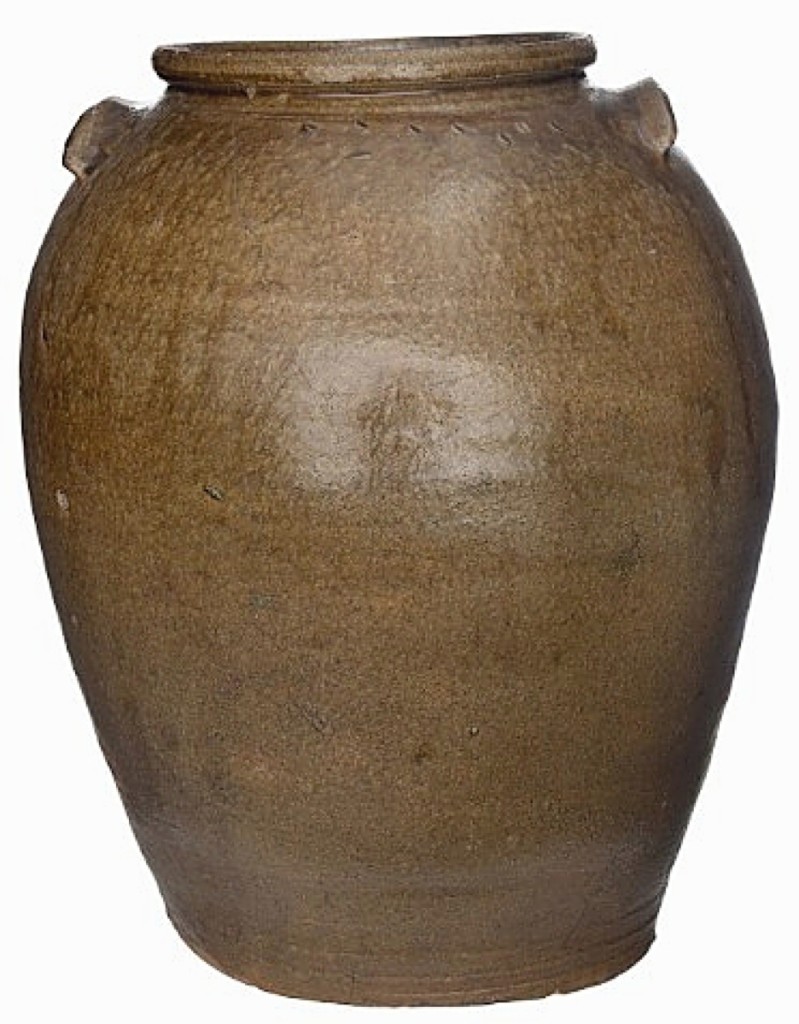
The Wingards had several works by Dave Drake; this signed and dated stoneware jar was dated 1858 and was made in the Lewis Miles Stoneware Manufactory during some of Drake’s most prolific years of signing and dating his pieces. An American institution acquired this for $57,960 ($15/25,000).
The Wingard’s extensive collection of Edgefield stoneware provided a wonderful opportunity for connoisseurship, with 50 pieces of Edgefield pottery on offer, including four other works made by Dave. All created later in his life, the prices realized were more modest, but all still exceeded their estimates. The best of these was a signed and 1858 dated stoneware jar that achieved $56,580, while a signed jar made a year later in 1859, achieved $17,220. Bringing $9,225 was a dated 1849 stoneware jar, while a cylindrical churn-shaped jar made in 1863 finished at $7,995. A small stoneware Edgefield face jug – not made by Drake – that only measured 3½ inches tall brought $47,880 and demonstrated interest in Edgefield pottery extending beyond Dave’s production.
Brunk said that they are seeing several new collectors of Southern pottery, some at significant levels, which he acknowledges brings a vibrancy and depth to the market. He also characterized the Southern fine art market as “solid.” Bidders came to the table in droves for the American fine art that was from the Wingard collection. The second highest price for something from the Wingard collection – $107,100 – was reached by Hermann Ottomar Herzog’s “Gainesville Marsh, Florida,” an oil on canvas that had been in a Spartanburg, S.C., collection before the Wingards acquired it. Three works by South Carolina artist, Elizabeth O’Neill Verner, were on offer, including her “Christmas Greens” that brought $36,900; both works by Alfred Heber Hutty exceeded expectations.
The market for Continental furniture has seen stronger days, but when the really good or rare examples comes along, it is an entirely different story. That was the case with the estate of Paul Doll Jr, whose esoteric aesthetic was of such high caliber and repute that the market responded and exceptional results were achieved from bidders in the United States and overseas. Born in 1926 near New York City, Doll was a lifetime collector whose varied collection was focused on Medieval and Renaissance objects, as well as some modern art by artists with whom Doll befriended.
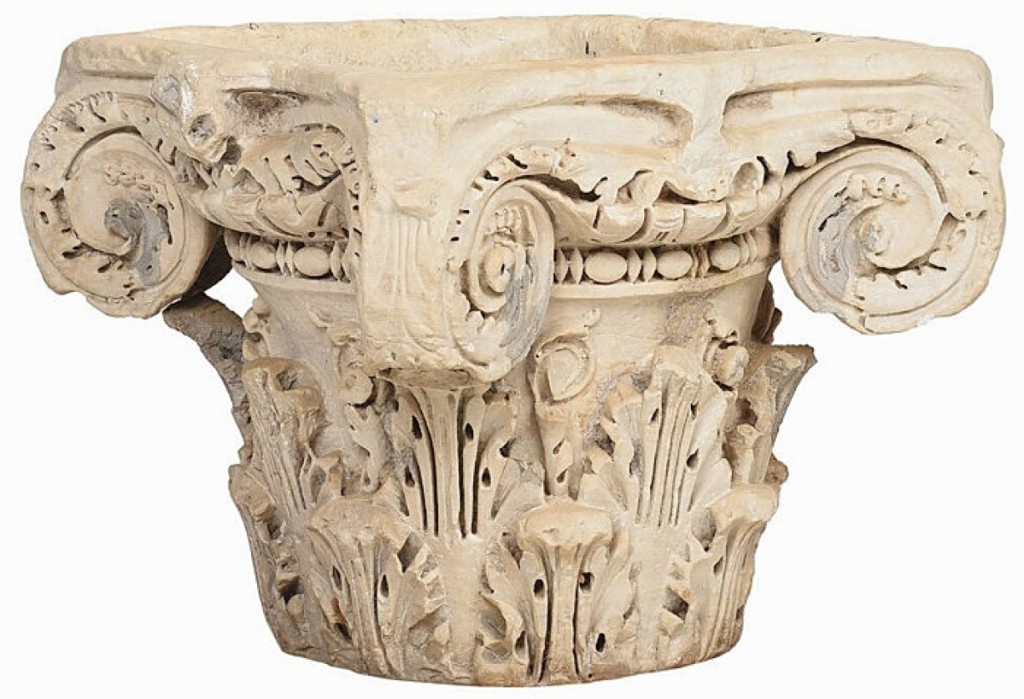
A 1966 appraisal that Leopold Blumka of New York City had done on this large Hadrianic carved stone capitol surfaced about a week prior to the sale. It brought $52,920 from a trade buyer in the United States, bidding online. Doll estate. ($3/5,000).
“With Doll, it was so esoteric and different; it photographed and advertised well and drew in some people who weren’t in our circle before,” Brunk said, noting that while bidding for the Wingard sale was largely on the phones and Brunk Auction’s proprietary auction platform BA Live, the international attention resulted in higher traffic on both Bidsquare and LiveAuctioneers.
Leading the Doll collection and selling for $107,100 was an Ottoman Empire jeweled Shishana rifle. We spoke with Brunk Auctions’ coin and currency specialist, Greg Capps, who cataloged it. “We were getting inquiries from all over about this,” he said, noting that all of the bidding action took place online and on the phones. “These seem to be very rare; the comparable examples I found were largely in museums and institutions, most of which are not in the United States.”
Bidding on a large Hadrianic carved stone capital, possibly from the Second Century, capped at $51,660, while bidders splashed $18,450 out on a Gothic marble font that was probably Sixteenth Century. A provincial Roman silver tetradrachm bearing the profile portrait busts of Cleopatra and Mark Antony, dated circa 36 BCE, was in extraordinary condition and, for such a small coin, brought the big price of $20,910. Capps said “it captures that moment when there was a merger of powers between an Egyptian Queen and a Roman general.”
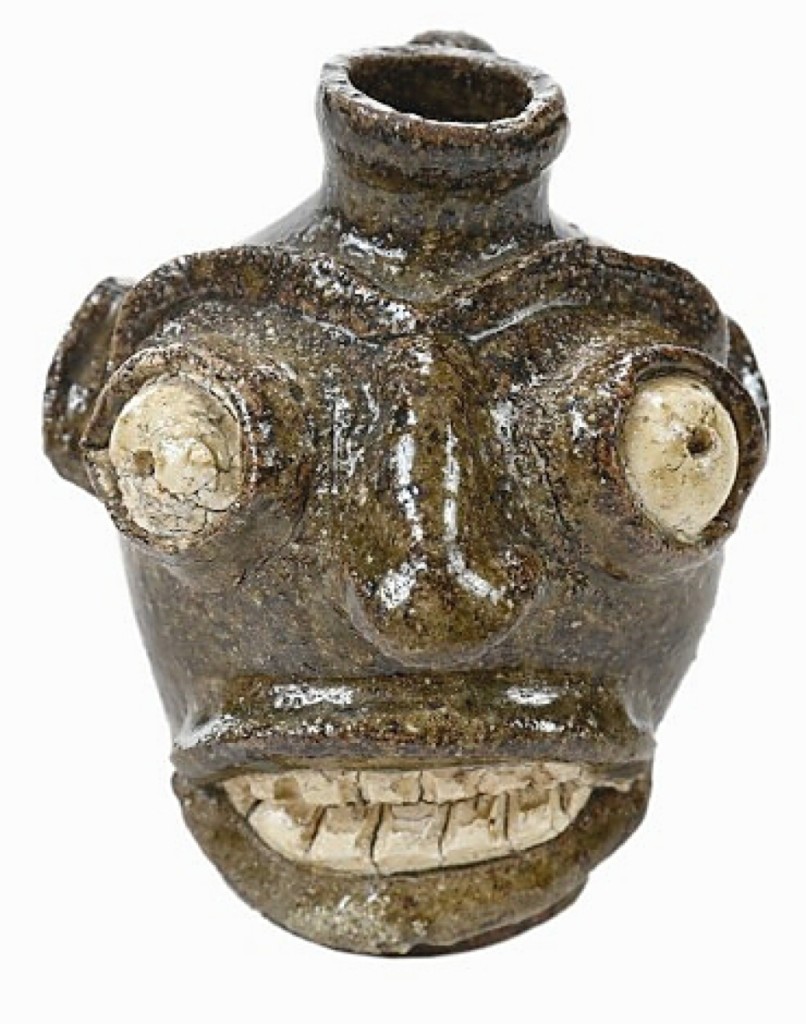
This face jug, made between 1860 and 1880 in the Edgefield District of S.C., was just 3½ inches tall. Possibly made at the Davies Pottery, it was rare and brought a commensurately high price, selling to an American private collector on the phone for $47,880. Wingard collection. ($15/25,000).
As expected of furniture made several centuries ago, repairs and replaced elements are not unusual, but the rarity of the pieces – often combined with noteworthy provenance – was such that condition issues did not deter bidders. Early furniture kicked off with a Tudor turned great chair that almost quadrupled its low estimate and brought $11,685. That was just the beginning. A French or Flemish Gothic tracery-carved iron mounted coffer realized $22,680 and a Continental Gothic carved and paneled walnut barrel-back chair reached $14,080. Nearly doubling its high estimate, a Spanish Gothic shrine cabinet finished at $12,160, but perhaps the bargain of the sale came when a massive French Gothic oak coffer that stretched 126 inches in length, brought $1,107 despite provenance to George Grey Barnard, John D. Rockefeller, The Metropolitan Museum of Art and Christie’s East.
In addition to his affinity for early decorative arts, Doll had an eye for modern fine art and befriended several artists whose works were featured in the sale. Paintings by Henry Gasser, John Grabach and Gary Erbe were all in plentiful supply, with competition and results across the board. High points for each artist were “November” by Gasser that closed at $15,120, the same price realized for John R. Grabach’s “Sunlight in Irvington.” “Music with Spice” by Gary T. Erbe (American, b 1944), played out to $6,765.
Brunk Auctions will conduct a Specialty and Emporium sale January 14-15, a Premier sale February 5-6 and a dedicated coin and currency sale March 12-13.
Prices quoted include the buyer’s premium.
Brunk Auctions is at 117 Tunnel Road. For information, www.brunkauctions.com or 828-254-6846.

